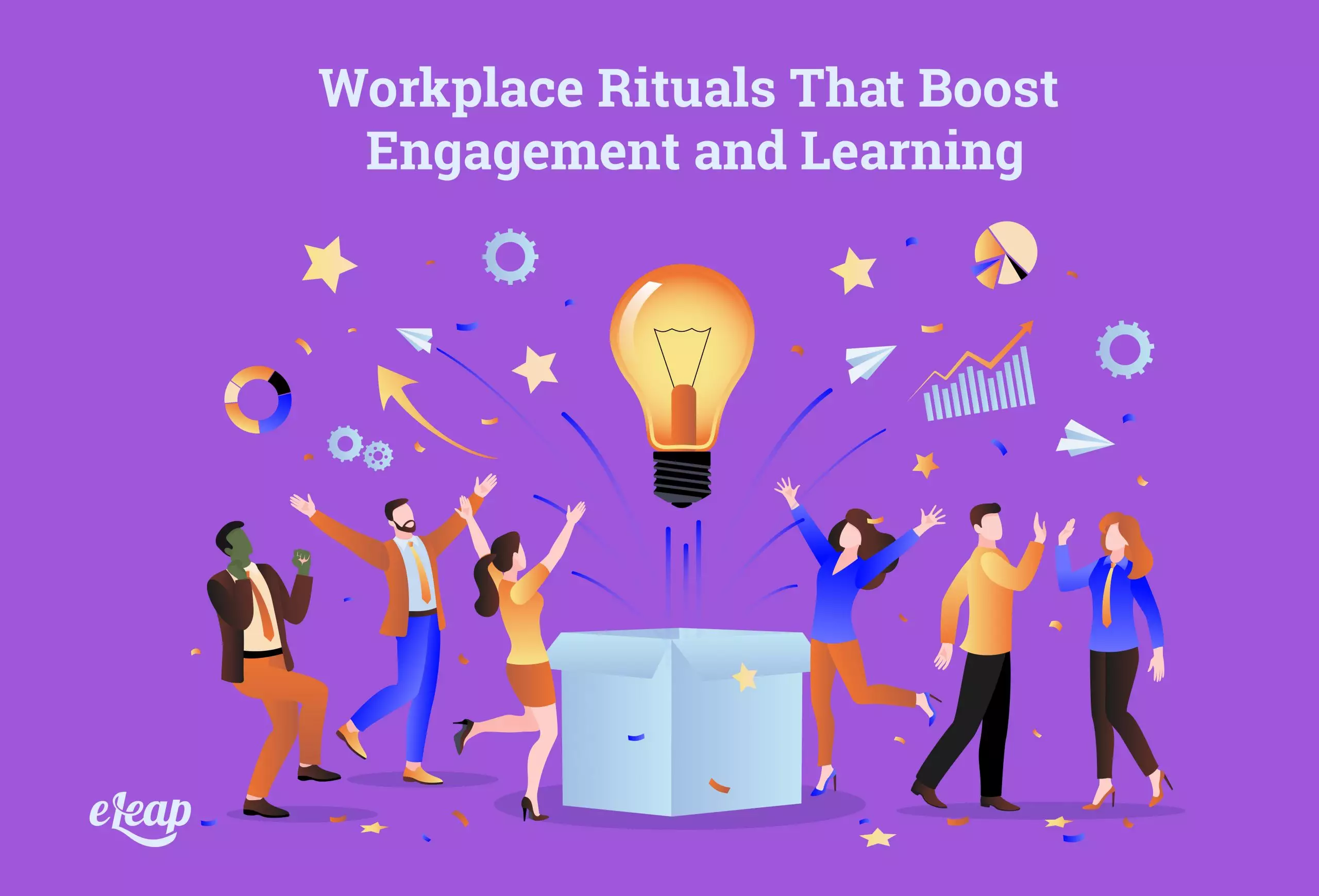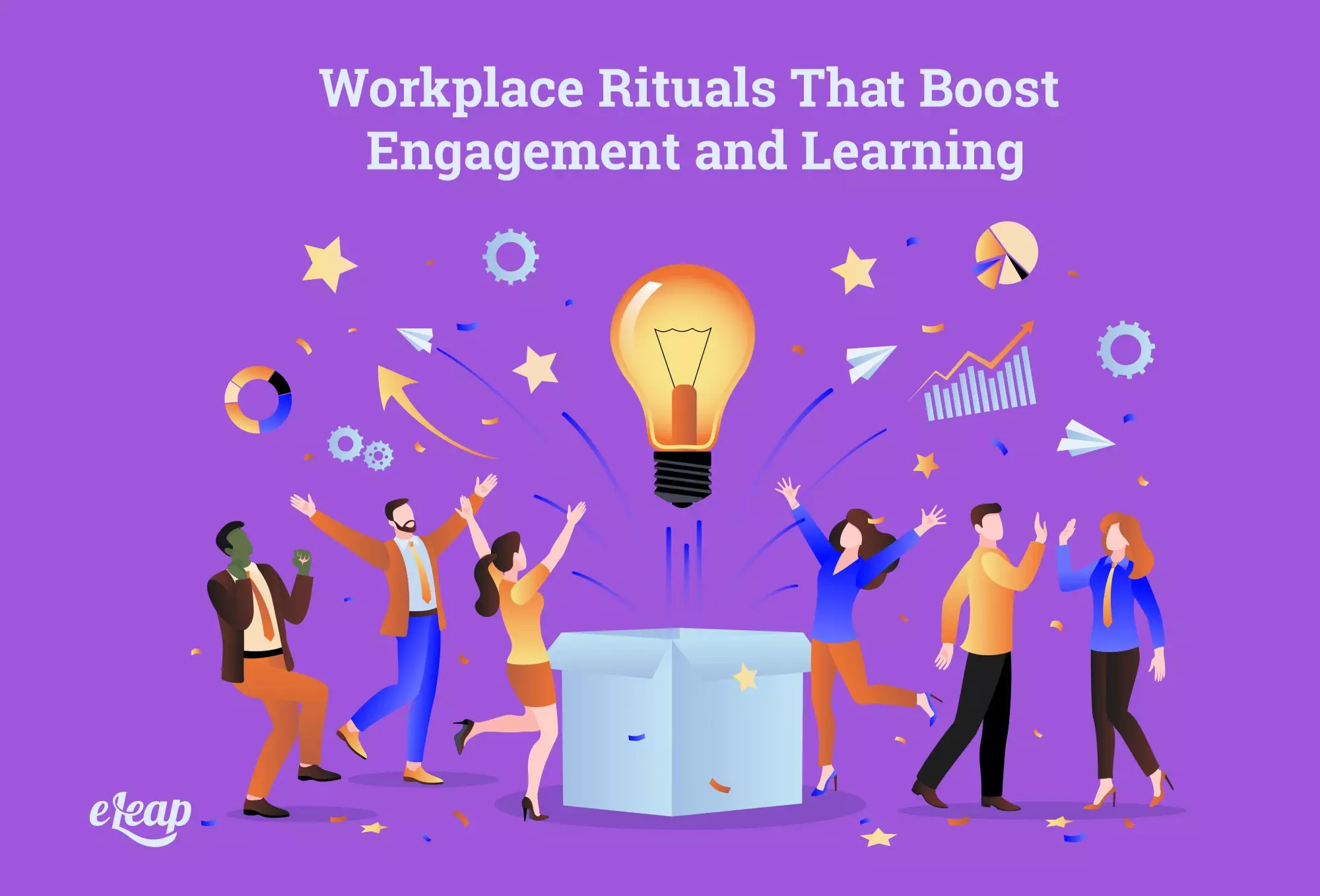Workplace Rituals That Boost Engagement and Learning

The word “ritual” might bring to mind ancient rites of passage. Alternatively, it might make you think about football teams dumping coolers filled with water or Gatorade over their coach’s head. However you slice it, human beings need rituals – they’re traditions that help create a sense of oneness, of familiarity, of community.
Rituals can play central roles in your business, as well. They’re part and parcel of fostering a sense of teamwork and interconnection. They can also provide your team members with the encouragement they need to push forward through L&D content, whether that’s upskilling, pursuing their career path, or something else.
Not sure what rituals have a place in your learning and development process? It can be confusing. We’ll discuss several important options below.

Celebrate Successes
For learning and development to proceed, your learners must continue from lesson to lesson, module to module. There must be continuity. However, that can be pretty challenging to accomplish if the learner doesn’t feel like they’re making progress.
Sure, they know they’re finishing one module and moving on to the next. However, it’s easy for the meaning to get lost in the shuffle. Why are they doing it? What’s the point of it all? If they’re just checking multiple-choice boxes and closing out modules, it can become easy to lose your motivation. Then, frustration begins. Annoyance, disengagement, and a loss of momentum follow.
You can prevent (or at least delay) the onset of those symptoms if you help them celebrate their successes. How do you do that? There’s no right or wrong answer. With the right LMS, you could add an animated screen between lessons that congratulates learners (as a very basic example).
For larger milestones, you might choose to recognize the employee’s progress in front of the entire team. It can be a source of pride, but it can also open up a spirit of competition and encourage other team members to move forward in their own training. Other options include:
- Pizza parties (for team success)
- Gift cards
- Learning-related rewards
- Special t-shirts
- Certificates of recognition
You could even go the route of having a team trophy that goes to the team who completed the most learning progress in a week. Pass the trophy around as each team vies for the top slot. You might be surprised at the results.
Schedule Learning Events
Humans associate events with importance. When we all get together for a single purpose, that purpose is automatically granted greater importance in our minds. You can use that to your advantage and encourage your learners to move forward.
A learning event can be a fun way to tap into that phenomenon. What sort of event, though? It could be something like a team learning day where everyone on the team comes together to complete training modules. It might be something like a webinar or a workshop, too.
Just Add Food
Another interesting thing about human beings is that when food is provided, we’re immediately more interested and engaged. If you provide lunch, your team members are much more likely to see the event as worth their time. Does that mean you have to spend a fortune on food to ensure they move forward in their training?
Not at all. There are ways you can combine the ritual of food with L&D success, including:
- Offer a restaurant gift card to anyone who completes modules within a specific timeframe.
- Offer a restaurant voucher to the top five team members who complete the most training lessons.
- Have a pizza party (or whatever food you prefer) as a reward for the team if they reach a specific milestone in training completed.
You get the idea – there are many ways that you can use food rituals to help motivate learning. Just get a little creative. You’ll be surprised at how eager your learners become.
Have a Roundtable Discussion
This ritual might not be as fun as using food or incentives, but it can offer greater value for the team and the entire business. Once a team completes a specific series of lessons, have them get together for a roundtable discussion about what was learned. This can be done either in person or remotely.
Create a series of questions about the content learned, and then have the employees go around the table answering those questions. Alternatively, have each employee share insights about the content learned and how they think it could be applied to their day-to-day experience in the business. The point is to get everyone talking and sharing their thoughts – it creates a sense of connectedness while cementing the importance of what was learned.
When Rituals Become Problematic
The ritual examples we’ve discussed above can be invaluable or helping to get everyone on board with L&D. They can help build additional value into learning, and create positive habits. However, there is the chance that rituals will become ends in their own right.
For instance, there’s the chance that encouraging competition is going to take the focus off what’s being learned and put it on the competition itself. Focusing on food might take the focus off the learning content and put it on the meal itself. Don’t let that happen.
The ritual should always serve the primary purpose for which it was created. If one begins to take on a life of its own, be prepared to eliminate it. Put something else in its place.
Create a Culture of Learning
Ultimately, the rituals we’ve talked about here are only steps along the path. The path to where, though? To create a culture where rituals and incentives aren’t needed to get your employees to buy into learning.
The point of it all is to create a culture that values learning for the sake of learning. It’s about getting your employees to realize that personal and professional development are their own reward. The value of an incentive is only transitory. The value of learning a new skill ultimately cannot be measured.